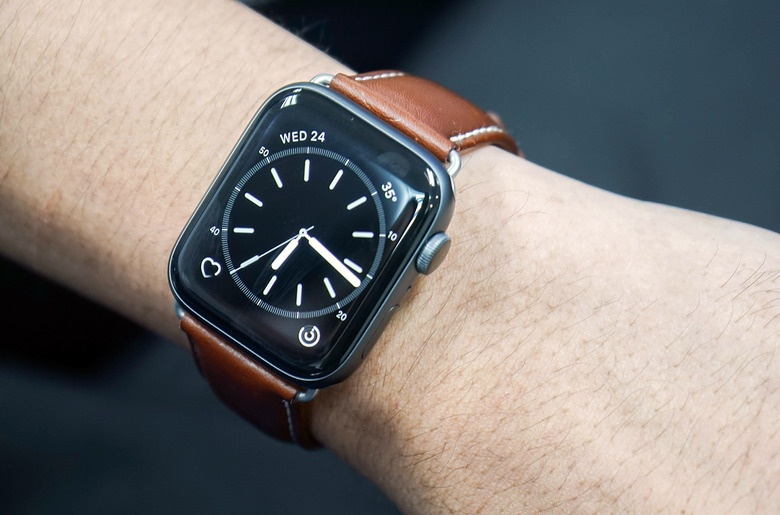Apple Watch And Fitbit Users With Heart Conditions Are More Likely To Get Medical Procedures
Since the arrival of the Apple Watch six years ago, we've seen countless stories about the wearable saving someone's life. The smartwatch features various health sensors, the most useful of which is the heart rate sensor that passively monitors the wearer's pulse. The watch can trigger alerts if the algorithms detect an arrhythmia, or an irregular heart rate, which can push the wearer to seek professional help.
But those anecdotes aren't enough to objectively measure the usefulness of wearable devices in monitoring certain conditions, so a team of doctors set out to observe patients suffering from atrial fibrillation (AF) and wearing Apple Watch or Fitbit devices that can measure the heart rate. They discovered that the group suffering from this medical condition that used wearables had undergone more medical procedures than the control group. However, smartwatch wearers have not overwhelmed physicians with calls compared to the group of people suffering from the same condition who do not own wearable devices.
AF is just the kind of condition that devices like the Apple Watch are designed to catch. It can lead to severe complications if untreated, so early detection can improve management of it for the patient. While devices like the Apple Watch are FDA-authorized to detect heart rate irregularities in healthy people, patients with known heart conditions also use them to monitor their heart condition.
According to the new study author Libo Wang, cardiologists often see patients who were diagnosed with AF bringing data from Apple Watch and Fitbit. "There are a good amount of patients who are using these wearables outside of the FDA cleared indication," he told The Verge. "That was sort of the motivation to start, not raising the alarm, but raising questions."
The study, published in JAMA Network, compared 125 people suffering from AF who visited the University of Utah Health during a 90-day period and mentioned using a wearable like the Apple Watch or Fitbit to 500 AF patients who did not use smartwatches to monitor their conditions. The control group had similar characteristics to the subjects, including age, socioeconomic status, and the number of times they visited doctors. The two groups had similar heart rate averages over the 90 days, indicating that they had the same average heart health.
"The people who were wearing wearables didn't necessarily call into the office more," Wang told the blog, adding that the finding was a welcome surprise. But over the 90 days, the wearables-wearing group had more medical procedures than the others. In particular, the researchers said the Watch and Fitbit users had more ablations, which is a procedure that involves scaring the heart tissue to restore a normal heartbeat.
However, the researchers can't explain whether the wearable users had the ablations because they had more severe symptoms than the control group or because the access to heart data convinced them to seek help.
Wang said there are two ways to interpret the findings. Patients might decide to buy an Apple Watch because of worsened heart rate, in which case the ablations are beneficial. But others might think their fibrillation is getting worse after using the Watch even when it isn't, in which case the ablations might be a "waste of time and a risk to the patient."
Either way, more research will be required to accurately determine how wearable devices can be used to improve the health of wearers who are already suffering from AF.
